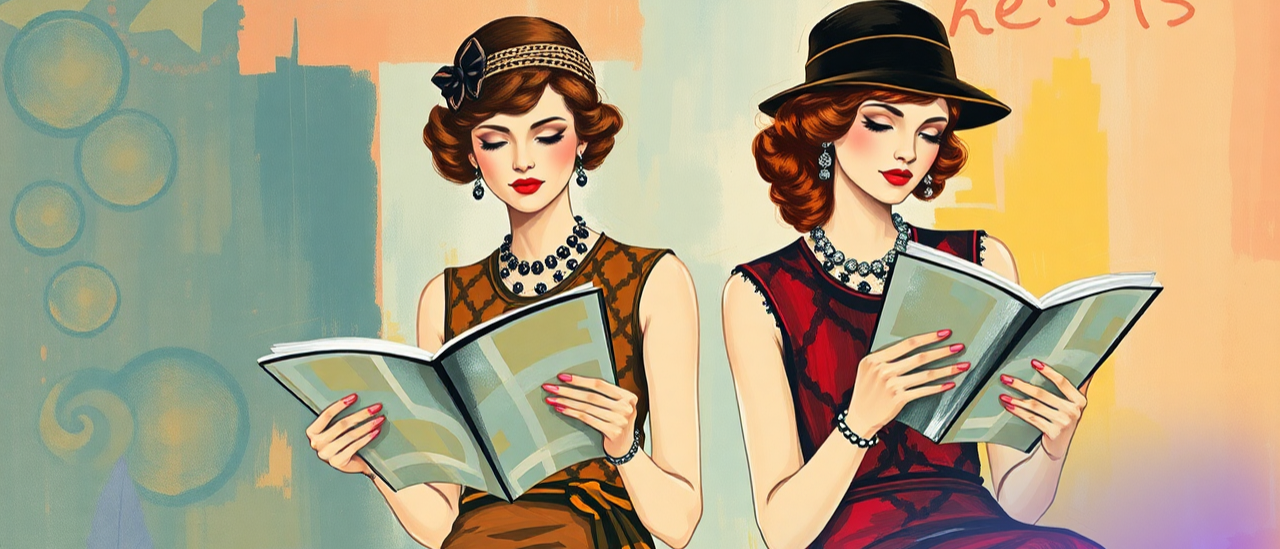The Roaring Twenties weren’t just about jazz and speakeasies—they were a golden age of fashion innovation. From flapper dresses and cloche hats to sharp suits and two-tone shoes, the 1920s set the stage for modern style revolutions. But before TikTok influencers or glossy Instagram feeds, how did people actually keep up with the latest looks?
Let’s take a stylish stroll through the most popular publications and methods trendsetters used to stay fashion-forward in the 1920s.
Fashion Magazines: The Glossy Gatekeepers
In the 1920s, fashion magazines reigned supreme. Titles like Vogue (already well-established by then), Harper’s Bazaar, and The Delineator were go-to sources for fashion forecasts. These glossy pages featured everything from high-society couture to ready-to-wear suggestions, often accompanied by hand-drawn illustrations and early fashion photography.
Illustrators like Erté and Georges Lepape brought Parisian elegance to life with Art Deco flair, making each issue a collector’s item. Women especially looked to these magazines not just for clothes, but for beauty advice, etiquette tips, and even sewing patterns.
Department Store Catalogs: Trendy by Mail
Sears, Roebuck and Montgomery Ward catalogs were the online shopping platforms of their time. They allowed everyday people—even those in rural America—to browse the latest city styles from the comfort of their homes. These catalogs featured a wide range of fashion-forward pieces, from beaded evening gowns to affordable flapper dresses.
Mail-order fashion democratized style, giving people access to trends that might have once been confined to the elite urban centers.
Paris: The Fashion Capital
Paris was the undisputed epicenter of fashion. The “Big Four” couture houses—Chanel, Lanvin, Patou, and Vionnet—set the tone for what was en vogue. Coco Chanel, in particular, revolutionized women’s wear with her relaxed silhouettes, jersey fabric innovations, and, of course, the little black dress.
Fashion-forward individuals and buyers would travel to Paris for fashion shows (though not yet the media spectacles we know today), returning home with suitcases—and sketchbooks—full of ideas.
Silent Film Stars: Hollywood’s Glamour Guides
As the silver screen boomed, movie stars became unexpected style icons. Actresses like Clara Bow, Louise Brooks, and Gloria Swanson influenced women’s makeup, hairstyles, and clothing choices. The cinema not only spread fashion ideals visually, but also showcased aspirational luxury that people sought to emulate.
Audiences watched films not just for entertainment, but to glimpse the latest in eveningwear, accessories, and chic urban looks.
Word of Mouth & Observation
Believe it or not, a lot of style was passed along simply by watching and talking. Seeing what others wore at parties, on the street, or in church helped shape local fashion norms. Friends shared ideas, swapped sewing patterns, and recreated fashionable looks from memory or inspiration.
Tailors, dressmakers, and milliners were also essential. They interpreted big-city trends for smaller communities, adapting them for individual clients.
—
Fashion in the 1920s was thrilling, transformative, and surprisingly accessible. Whether through a Parisian magazine, a Sears catalog, or a flickering silent film, people found creative ways to stay stylish. It was a decade where innovation met elegance, and everyone wanted in on the look.

